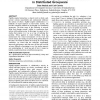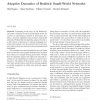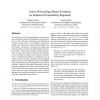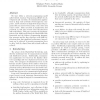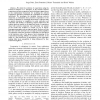759 search results - page 76 / 152 » Creating social networks to improve peer-to-peer networking |
CSCW
2008
ACM
13 years 9 months ago
2008
ACM
Tightly-coupled interaction is shared work in which each person's actions immediately and continuously influence the actions of others. Tightly-coupled collaboration is a hal...
CORR
2008
Springer
13 years 7 months ago
2008
Springer
Continuing in the steps of Jon Kleinberg's and others celebrated work on decentralized search, we conduct an experimental analysis of destination sampling, a dynamic algorithm...
IWAN
2000
Springer
13 years 11 months ago
2000
Springer
The primary goal of active networking is to increase the pace of network evolution. The approach to achieving this goal, as well as the goal of enhancing customizability, is to al...
ICPADS
1996
IEEE
13 years 12 months ago
1996
IEEE
We have de ne a network programming model called Mobile Assistant Programming (MAP) for development and execution of communication applications in large scale networks of heteroge...
CEC
2009
IEEE
14 years 13 days ago
2009
IEEE
— We study the evolution of cooperation using the Prisoner’s Dilemma as a metaphor of the tensions between cooperators and non-cooperators, and evolutionary game theory as the ...
